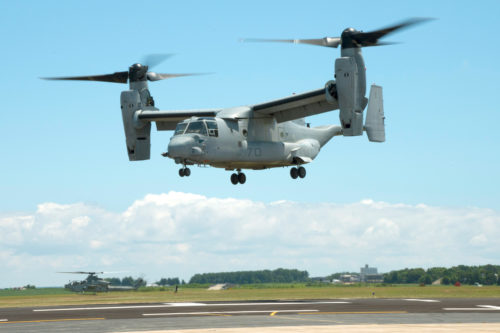Naval Air Systems Command (NAVAIR) has successfully employed 3-D printing technology to fabricate a flight critical aircraft component and flew it on board an aircraft.

PATUXENT RIVER NAVAL AIR STATION, Md. (July 28, 2016) An MV-22B Osprey equipped with a 3-D printed titanium link and fitting inside an engine nacelle maintains a hover during a July 29 demonstration at Patuxent River Naval Air Station, Md. The flight marked Naval Air System Command’s first successful flight demonstration of a flight critical aircraft component built using additive manufacturing techniques. (U.S. Navy photo/Released)
The part was a a titanium link and fitting assembly for the engine nacelle of the V-22. This link and fitting assembly is one of four that secure a V-22’s engine nacelle to the primary wing structure.
NAVAIR intents to fabricate six additional 3-D printed parts for the V-22, H-1 and CH-53K.